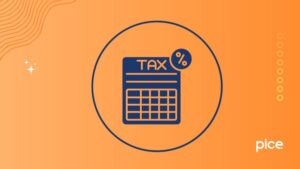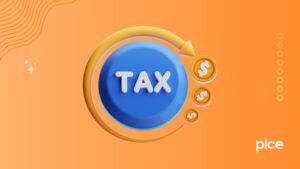Voluntary Payment in GST
- 24 Jan 25
- 9 mins
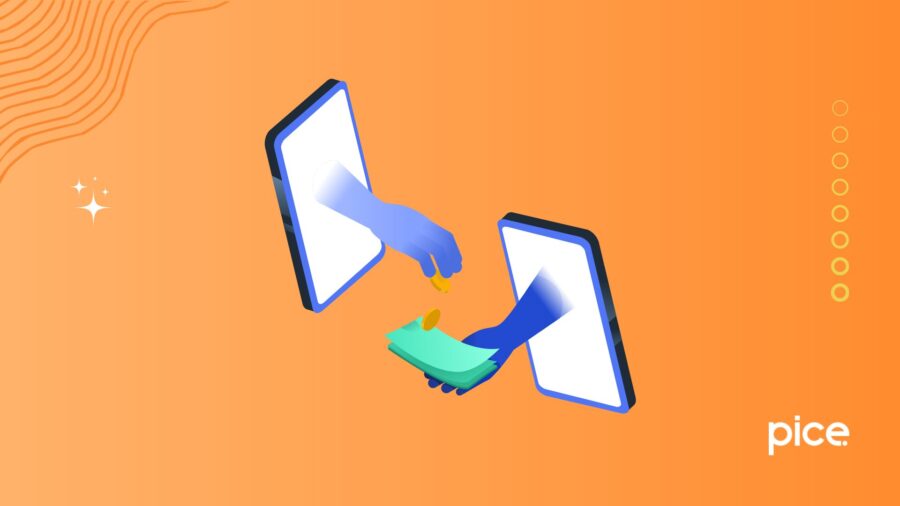
Voluntary Payment in GST
- What Is GST Voluntary Payment?
- How Does GST Voluntary Payment Benefit Taxpayers?
- Who Can Make GST Voluntary Payments Under Section 73(5)?
- What Types of Payments Can be Made Voluntarily Under Section 73(5)?
- Voluntary Payment Before SCN: Penalty Benefits
- Consequences of Non-Payment Under Section 74
- Steps for Voluntarily Making the GST Payment Before Issue of Show Cause Notice
Key Takeaways
- Voluntary GST payment allows taxpayers to settle dues before receiving a Show Cause Notice (SCN).
- Early payment reduces penalties to 15% and avoids legal proceedings.
- Taxpayers can file GST DRC-03 through the GST portal for voluntary compliance.
- Non-payment under Section 74 can lead to penalties, property attachment, or GST registration cancellation.
- Proactive tax compliance builds goodwill and ensures smoother resolution of liabilities.
According to the tax structure in India, taxpayers can claim an input tax credit by filing their GST within the maximum time period. However, it is important to properly pay GST to avoid legal repercussions. This blog will discuss voluntary payments in GST, who is eligible for them, and the types of payments that can be made under Section 73(5).
It will also go through the benefits of voluntarily paying GST, steps to file GST DRC-03 for voluntary payment, consequences of non-payment of GST under Section 74, and the steps to voluntarily pay GST before a show cause notice is issued.
What Is GST Voluntary Payment?
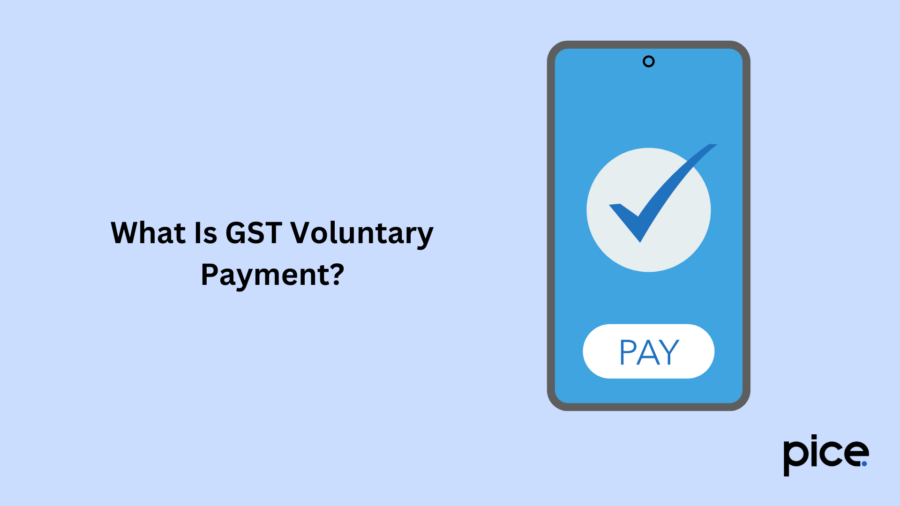
Voluntary payment in GST (Goods and Services Tax) refers to the payment made by a taxpayer to the government without any formal demand or issue of show cause notice. It is a facility that allows taxpayers to pay their due taxes before the notice is issued and under 30 days of issuance of the SCN under Section 73 or 74 of the CGST Act, 2017.
How Does GST Voluntary Payment Benefit Taxpayers?
There are multiple advantages to choosing voluntary payment in GST. Some of them are:
- If taxpayers make voluntary payments of GST, it shows their commitment to compliance and helps gain goodwill with the tax authorities.
- Voluntary payment of taxes makes the resolution process for tax liabilities more efficient and reduces unintentional errors since the taxpayers are sincere while they file their taxes.
- It can reduce the chances of getting tax penalties for the taxpayers by meeting compliance with GST regulations.
Who Can Make GST Voluntary Payments Under Section 73(5)?
Individuals and businesses can voluntarily pay GST by calculating their tax amount themselves or relying on the tax calculation made by the tax officer for successful filing. Along with the tax, they must also pay any interest due (as mentioned in Section 50) and additional payment if applicable. After making the payment, they need to inform the tax officer in writing of the payment details of the taxes paid.
What Types of Payments Can be Made Voluntarily Under Section 73(5)?
- Interest on Tax Due
The taxpayer is required to pay the interest that is due for the period of nonpayment or delayed payment of tax along with the principal tax.
- Penalty
Under Section 73(5), the taxpayer may also be liable to pay a penalty. However, the successful filing of tax, interest and penalty voluntarily and before any notice is issued by the tax authorities under Section 73(1), the penalty may be reduced.
Is GST Voluntary Payment Mandatory?
In India, GST (Goods and Services Tax) payment is mandatory for businesses registered under the GST regime. The GST Act mandates that registered businesses must collect and remit GST on their taxable supplies.
Voluntary Payment Before SCN: Penalty Benefits
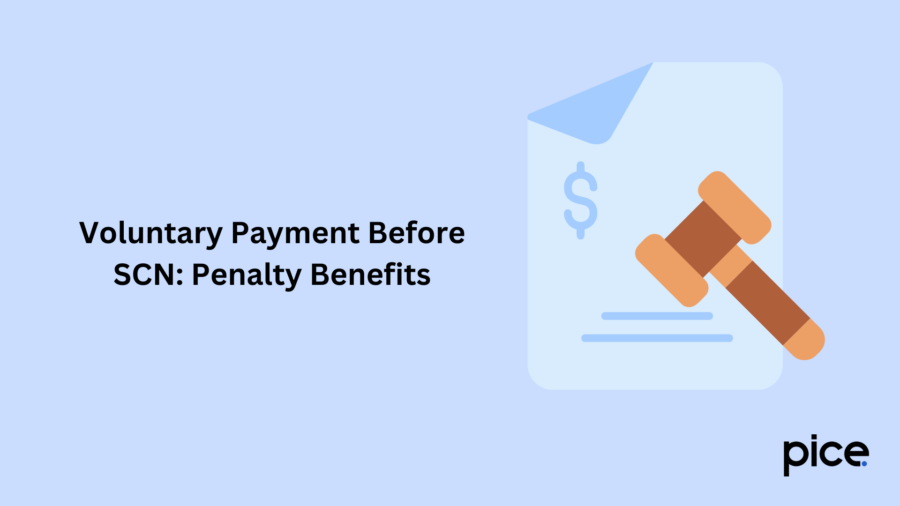
Here are the benefits of voluntarily paying GST before a Show Cause Notice is issued:
- Reduced Penalty
If a taxpayer makes a voluntary payment before receiving an SCN, the penalty is reduced to 15% of the tax amount. This is significantly lower than the potential 100% penalty that could be imposed if the case proceeds through adjudication.
- Avoidance of Legal Proceedings
Taxpayers can avoid the lengthy and potentially stressful process of dealing with a show cause notice and subsequent legal proceedings by making a voluntary payment. This provides taxpayers with peace of mind by properly filing their tax returns.
- Improved Relationship with Tax Authorities
Voluntary payment demonstrates a taxpayer's commitment to tax compliance and can help to build a positive relationship with the tax authorities.
Steps to File GST DRC-03 Filing Process for Voluntary Payment
Taxpayers can make voluntary payments against the liability based on self-ascertainment of tax and filing the DRC-03 form (Demand and Recovery Form) under the Goods and Services Tax (GST) system in India.
You can follow these steps to file the DRC 03 form:
- First, you have to log into the GST portal using your credentials.
- Then, go to the Services menu and choose Payments from the Services dropdown.
- Next, you must click on Create DRC-03.
- After that, enter the important details, such as the cause of payment and the period it applies to.
- Finally, complete payment using the electronic cash ledger or credit ledger.
- Here, the taxpayers are not allowed to make partial payments against the obligation referred to in the Show Cause Notice.
Consequences of Non-Payment Under Section 74
The following may happen in case of non-payment of GST under section 74 of the CGST Act, 2017 :
- Demand for Payment of Tax
If a proper officer determines that a taxpayer has failed to pay the GST either due to negligence or deliberate avoidance, they can issue a GST notice to them and ask them to pay the tax with applicable interest.
- Show Cause Notice
In cases of tax evasion, tax shortfall, or improper claims on annual returns, the proper officer of the tax authorities may issue a show cause notice (SCN). Then, the recipient must respond to this notice with valid explanations or evidence to justify why they should not be penalised or asked to pay additional taxes.
- Attachment of Property
If the taxpayers cannot pay their dues, the tax authorities may provisionally attach their property or assets to recover them.
- GST Registration Cancellation or Suspension
If a taxpayer is found to be involved in tax evasion or violations, the proper officer of tax authorities may proceed by suspending or cancelling their GST registration.
Steps for Voluntarily Making the GST Payment Before Issue of Show Cause Notice
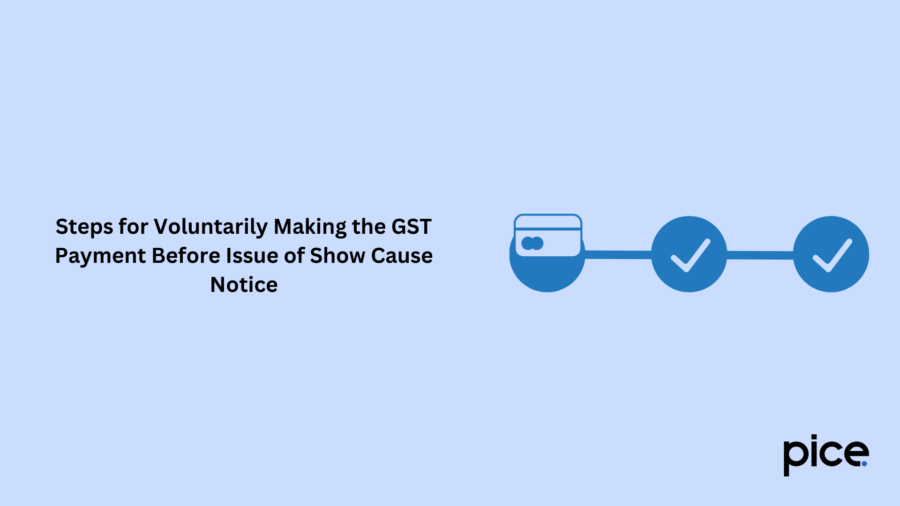
Here is a crucial step-by-step guide for paying taxes based on self-evaluation prior to SCN issuance or within 30 days of Show Cause Notice under the determination of the tax:
- First, log in and enter your details in the GST portal login.
- Then, click on the Services tab, and after that, User Services.
- From there, you must click on My Applications and select Intimation of Voluntary Payment-DRC-03 from the application type drop-down list.
- After that, click on the New Application option, and the Intimation of Payment made Voluntarily or made against the Show Cause Notice (SCN) page will load on the screen.
- You can view the saved application for intimation of payment mode by clicking on the Services tab, selecting User Services and clicking on the My Saved Application button. This will come in handy for future reference.
- Once you have viewed the application, you can proceed to select the cause of payment by clicking on the Cause of Payment option.
- The date of payment is auto-populated, and you cannot edit it. In the case of the Show Case Notice, select the Manual Entry from the SCN Reference Number list and select the SCN Issue Date.
- Next, you must choose the financial year by using the From date and the To date fields for the whole tax period.
- After that, enter your payment details, which include the interest, penalty payable, and any other dues. From there, click the Set-off button after entering the amount.
- Next, the screen will display a confirmation message. Then, you must click on OK and a success message and the Payment Reference Number (PRN) are displayed.
- You will have to click on Services, then the Ledgers option, and click on Electronic Liability Register.
- The intimation of payment paid voluntarily or against the show cause notice page appears when the PRN is generated. If a PRN is not generated, the taxpayer must select the 'Services' tab, then the 'Ledgers' option, and finally the Electronic Liability Register.
- After the PRN is generated, you can preview the draft in the preview format by clicking on the Preview option.
- Upload the necessary documents by clicking on the Choose File button. Here, the files should be in PDF or JPEG, and click on the verification checkbox.
- Afterwards, select the name of the authorized signatory and enter the place where you are filling out the application form.
- Finally, click on File with DSC or the File with EVC. You must select the certificate and click on Sign to file with DSC.
- In case you want to file with the EVC, enter the OTP sent to the email ID and mobile number of the Authorised Signatory registered at the GST portal and click Validate OTP.
- After you click on the Validate OTP button, the screen will display the success message and the ARN.
Conclusion
This blog has discussed what voluntary payment in GST is, its benefits, steps, and more in depth. Voluntarily payment of tax liabilities before the issuance of a Show Cause Notice enables taxpayers to avoid paying potential fines, legal repercussions, attachment of property, and GST license cancellation/suspension.
💡If you want to streamline your payment and make GST payments, consider using the PICE App. Explore the PICE App today and take your business to new heights.
 By
By 












